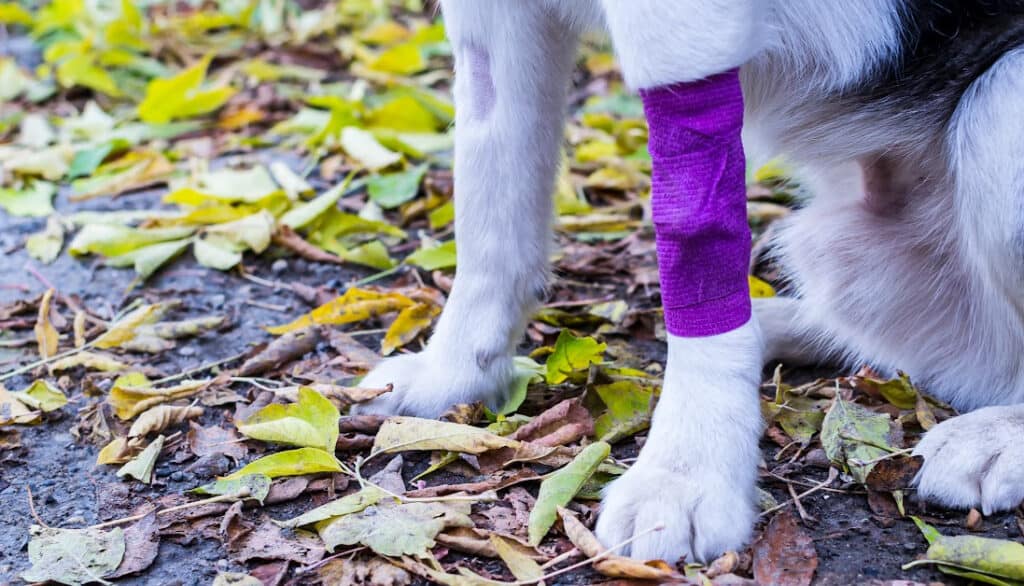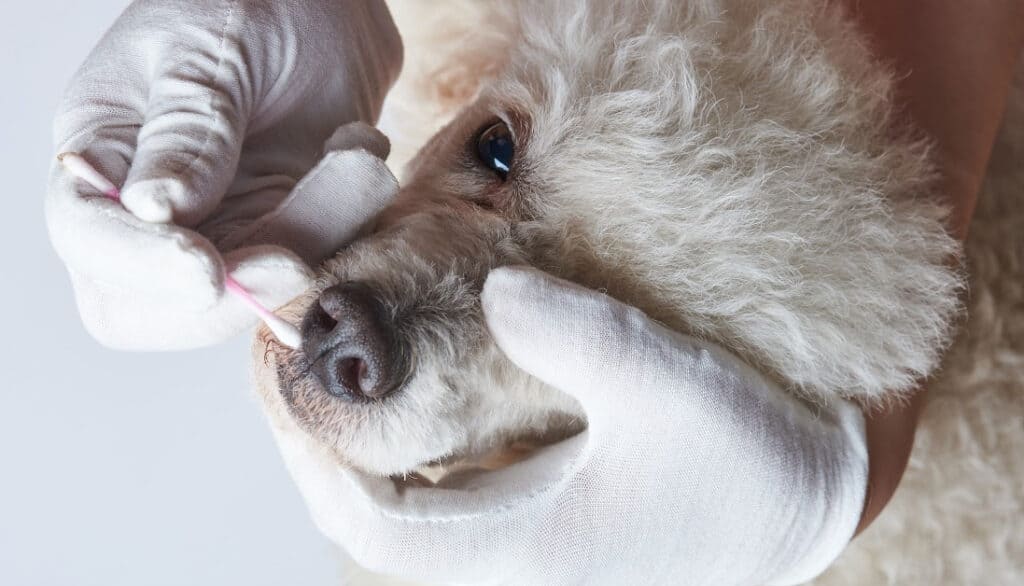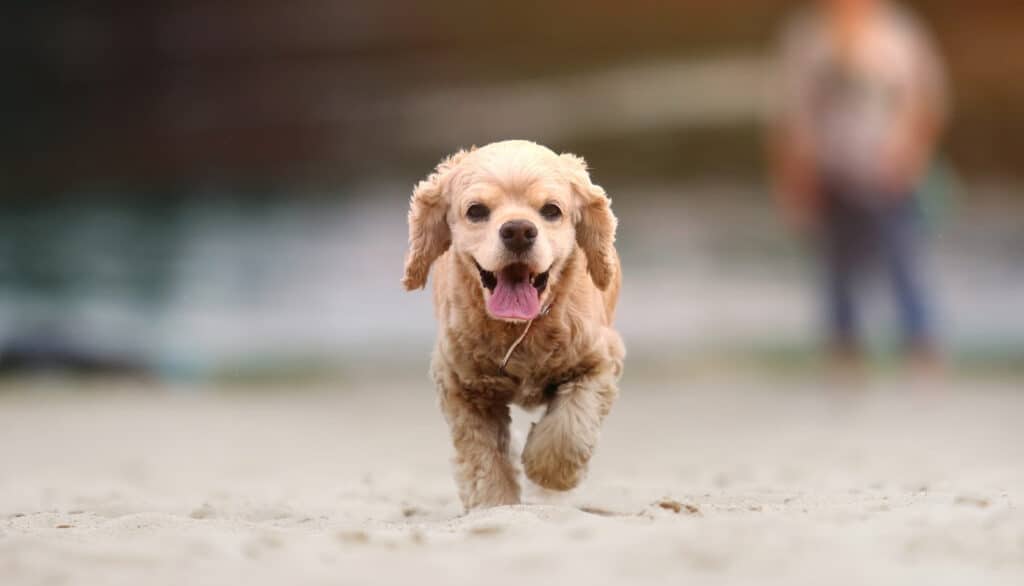Ever wonder “can you use liquid bandage on dogs?” The short answer is yes. To keep your furry friend safe and healthy, you must take every precaution necessary. In order to address the issue of dog injuries, you may be wondering if liquid bandages are safe to use. To understand the use of liquid bandages on dogs, we will explore the properties of liquid bandages and how they work.

Understanding Liquid Bandage
The Functionality of Liquid Bandage in Treating Canine Wounds
Liquid bandages are a fast-drying, waterproof adhesive that seals wounds. This wound covering functions as an antimicrobial barrier while promoting healing and preventing dirt from reaching the lower layers of the skin. The application makes it easy to access hard-to-reach areas that require protection. As a result, pet owners often opt for liquid bandage when dealing with their canine’s injuries.
Using Liquid Bandage on Dogs
The possibility of using liquid bandages on dogs is optimal for minor injuries and can be a temporary solution before consulting a veterinarian. It is important to ensure that your dog does not lick or chew on open wounds covered by liquid bandages because ingesting it could cause harm to them. Also, liquid bandage can only be used on surface-level wounds. It should not be used on deep or surgical wounds as they require veterinary attention.
Unique Details
Pet parents who choose to utilize liquid bandages appreciate its easy-to-use application method that needs no cutting or wrapping like traditional wraps or dressings. Moreover, various animal-specific brands offer products made exclusively for dogs that provide quick relief from bites and scratches. These options come in handy for many pet owners seeking immediate solutions for their pet’s ailments without having to schedule appointments with veterinarians or rush them into emergency care facilities.

When Can Liquid Bandage Be Used on Dogs?
To effectively treat your dog’s minor cuts and wounds, using liquid bandage can be an easy and efficient solution. Liquid bandage can also be used as an alternative to traditional bandages and cones. In this section, we will explore when it is appropriate to use liquid bandage on your dog and the benefits it provides.
Treating Minor Cuts and Wounds with Liquid Bandage
When dogs have minor wounds and cuts that need quick treatment, Liquid Bandage can be used as an effective solution. Ensuring proper application of this medical-grade glue-like substance on the wound’s surface. This will not only protect it from external contaminants but also aid in speeding up the healing process.
Here is a 4-step guide to treating minor cuts and wounds using Liquid Bandage:
- Cleanse the wound with sterilized water and allow it to dry completely.
- Apply a single coat of Liquid Bandage evenly on the affected area.
- Let it air-dry for about a minute before applying another coat if necessary.
- Keep your dog calm and avoid any disturbance around the treated area while it completely dries up.
It is essential to note that using Liquid Bandage should not replace proper veterinary care when your dog has severe injuries or deep lacerations. In situations where excessive bleeding, swelling, or infection is noticeable, seek professional veterinary assistance urgently.
In summary, using Liquid Bandage to treat minor wounds and cuts in dogs can offer quick relief and protect them from further harm. Proper use can help prevent infection or scarring while promoting faster healing times.

Liquid Bandage as an Alternative to Traditional Bandages and Cones
Liquid bandage provides an alternative to traditional bandages and cones for dogs. This spray or liquid forms a protective layer on wounds, promoting healing. It saves your dog from the discomfort of wearing a cone or bulky bandages.
Moreover, liquid bandage can be used for various dog injuries such as cuts, abrasions, lacerations, and surgery incisions. The product dries quickly and forms a waterproof seal to protect the wound from dirt and bacteria. Dog owners must check with their vets before using it on open or infected wounds.
Importantly, it is essential to note that liquid bandage is not a substitute for veterinary care. If the injury appears severe or does not heal within a short time frame, seek professional medical attention immediately. Also, pet owners should monitor their dogs closely after applying the liquid bandage to prevent licking or chewing on the wound site which could damage it further.

How to Use Liquid Bandage on Dogs
To effectively use liquid bandage on your furry friend, it’s important to be prepared and know how to apply it properly. In order to do this with ease, equip yourself with the knowledge of the two sub-sections for this section: preparing your dog for liquid bandage application and applying liquid bandage on your dog.
Preparing Your Dog for Liquid Bandage Application
To ensure proper application of liquid bandage on your dog, it is crucial to prepare your furry friend adequately. This involves taking some necessary steps to make the process easy and efficient. Here’s how you can prepare your dog for liquid bandage application.
- Restraining your dog: Restrain your dog by placing them on a comfortable surface and holding them still. You can use an Elizabethan collar or a muzzle if needed.
- Cleaning the affected area: Clean the injured area by gently washing it with lukewarm water and mild soap. Then dry the area with a clean towel, taking care not to rub it vigorously
- Removing hair around the wound: Trim any long hair surrounding the wounded area. This may cause discomfort during the healing process.
- Securing loose skin: If there is loose skin around the affected area, stretch it out and secure it in place so that the skin is taut when applying liquid bandage.
- Warming up liquid bandage: Before use, hold the container of liquid bandage in warm water for about 10 minutes to warm it up for better application.
- Soothing distractions available: Lastly, have soothing distractions such as treats or toys nearby to keep your canine friend calm during application.
It’s essential to check if your dog has any allergies before using specific brands of liquid bandages. The use of alcohol pad sterilizes the wound site before applying Liquid Band-Aid. This ensures maximum cleanliness level for maximum protection against infections.
Applying Liquid Bandage on Your Dog
Using Liquid Bandage for Canine Wounds
Liquid bandage can be an effective solution in treating minor wounds and cuts on dogs. Below is a simple guide to help you apply liquid bandage correctly on your pet.
- Prepare the wound – clean any debris, dirt or hair from the affected area.
- Apply gentle pressure to stop bleeding.
- Apply liquid bandage – ensure the nozzle of the bottle doesn’t touch your dog’s wound and allow time to dry.
- Repeat process with another layer if required.
- Prevent your dog from licking the wound by monitoring him for a few minutes after applying the liquid bandage.
It is important to remove any existing bandages or dressings before applying liquid bandage as it may reduce its efficacy to provide a protective barrier against infection. Always consult with your veterinarian before using liquid bandage to treat open wounds, deep cuts or larger lesions that might require further medical attention.

Precautions When Using Liquid Bandage on Dogs
Not Suitable for Deep or Infected Wounds
When applying liquid bandage on your pet’s wounds, it is necessary to account for the severity of the injury. This method may not be appropriate for deeper or infected cuts as it could cause more harm than good. Applying the coating on these types of surface-level injuries only accelerates healing time and aids in overall recovery.
Thus, it is critical to pay close attention to any warning signs of infection or severe wounds that require professional help. In such cases, liquid bandage should be avoided and a veterinarian should be consulted immediately.
Before applying liquid bandage, ensure that the area around the wound is clean and dried properly. Additionally, make certain that your pet does not lick this medication off its wound as it could result in toxicity issues. Also avoid using human-grade products on pets unless advised otherwise by a qualified medical professional.
Using Liquid Bandage on Sensitive Areas of Your Dog
When applying liquid bandage on your furry friend’s sensitive areas, special care is required. Areas such as the paws, nose and ears may be prone to infection if not properly treated. It is important to first clean the area with an antiseptic solution and dry it thoroughly before applying the liquid bandage. Using a sterile applicator brush, apply a thin layer and wait for it to dry completely before allowing your dog to lick the area.
It is also crucial to monitor your dog for any signs of adverse reactions, including excessive drooling, vomiting, or swelling at the application site. If you notice any of these symptoms or if your dog appears uncomfortable, seek veterinary attention immediately. For areas that are particularly sensitive or difficult to treat, such as the eyes or genital region, consult with your veterinarian before using liquid bandage.
Overall, while liquid bandage can be an effective tool in treating minor wounds on your pet’s sensitive areas, it is important to use caution and follow proper application techniques to ensure a safe and effective outcome.

Conclusion and Final Thoughts
To conclude, liquid bandage can be a valuable tool for dog owners, with its benefits and drawbacks. However, when using liquid bandage on your canine, it’s crucial to consult your veterinarian before applying it to ensure it won’t cause any adverse effects. Overall, by having an open and honest discussion with your vet, you can determine whether liquid bandage is appropriate for your dog and use it safely.
Liquid Bandage as a Useful Tool for Dog Owners
The application of liquid bandage for dogs is a valuable tool that every dog owner should consider. It is a useful solution for minor cuts, wounds and abrasions in dogs. Additionally, instead of traditional bandages which can be uncomfortable and cause your furry friend to scratch at the wound, liquid bandages adhere quickly, dry instantly and are safe if ingested.
Furthermore, as some breeds can have delicate skin, it is essential always to consult with a veterinarian to determine whether this type of bandage is suitable for your pet’s specific needs. Overall, liquid bandages are an effective tool that can save dog owners time and money by avoiding frequent vet visits when dealing with minor skin injuries.
In addition to prevention of infection or further injury caused by scratching or licking wounds, liquid bandages provide a protective layer that contributes to faster healing times. By sealing out any dirt and bacteria while allowing moisture to escape from the wound, this allows the affected area to heal more efficiently than a traditional bandage ever could.
Dog owners should also be aware that Liquid Bandages come in various forms; some are water-resistant and perfect for dogs who love the water while others contain antiseptic additives intended to disinfect the wound while healing. No matter what form you choose, liquid bandages for dogs provides pet owners quick and easy access to safe wound care products specifically designed for their pet’s delicate needs.
Consult with Your Vet Before Using Liquid Bandage on Your Dog
Liquid Bandage for Your Dog: Consult with a Vet First
When considering liquid bandage application on your dog, speaking with a veterinarian beforehand is crucial. It’s important to ensure that the product is appropriate for your dog’s specific needs and won’t cause any adverse reactions or complications. Consulting with a vet can also help identify any underlying health issues that may require alternative treatment methods.
The expertise of a vet can provide invaluable insight into the use of liquid bandages. They can offer specific recommendations for application based on your dog’s condition, breed, age, and overall health. Additionally, they may be able to provide guidance on potential side effects and how to manage them if they do arise.
It’s always better to err on the side of caution when it comes to your pet’s health. While liquid bandage can be a useful tool in treating minor injuries or skin irritations, consulting with a vet before use should be considered standard practice.
By being informed about the proper use of liquid bandage and seeking out the guidance of a professional veterinarian, you can ensure that your furry friend receives the best possible care.
Frequently Asked Questions
A: Yes, liquid bandage can be used on dogs for minor cuts and abrasions.
A: Yes, liquid bandage is safe for dogs when used according to the instructions and in moderation.
A: No, liquid bandage should not be used on deep or severe wounds as it may not be able to provide the necessary protection and may even delay proper treatment.
A: Typically, liquid bandage takes about 30 seconds to dry on a dog’s wound.
A: Liquid bandage eventually flakes off on its own as the wound heals. You do not need to remove it manually.
A: Yes, liquid bandage can be used on other pets like cats as well but it is recommended to seek advice from a veterinarian first.
